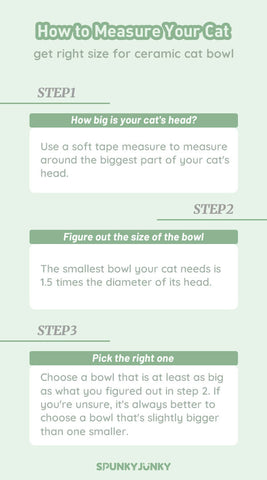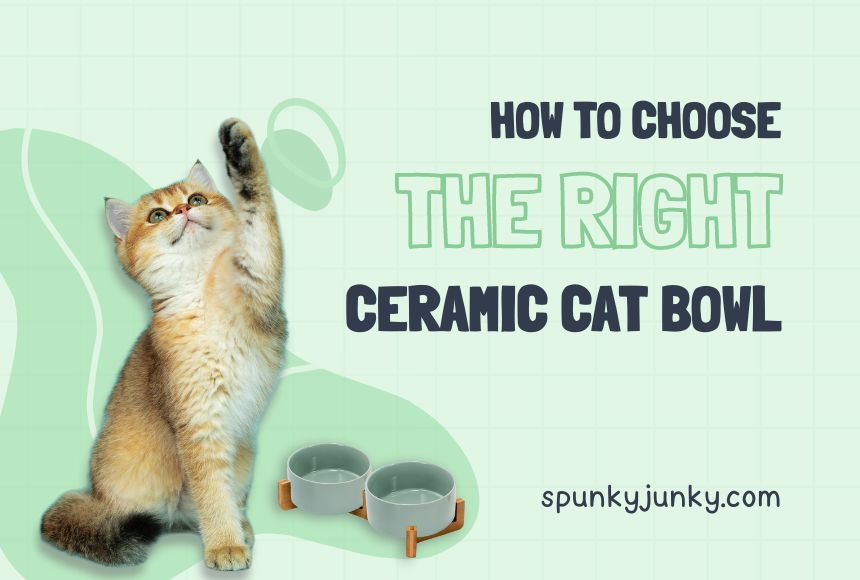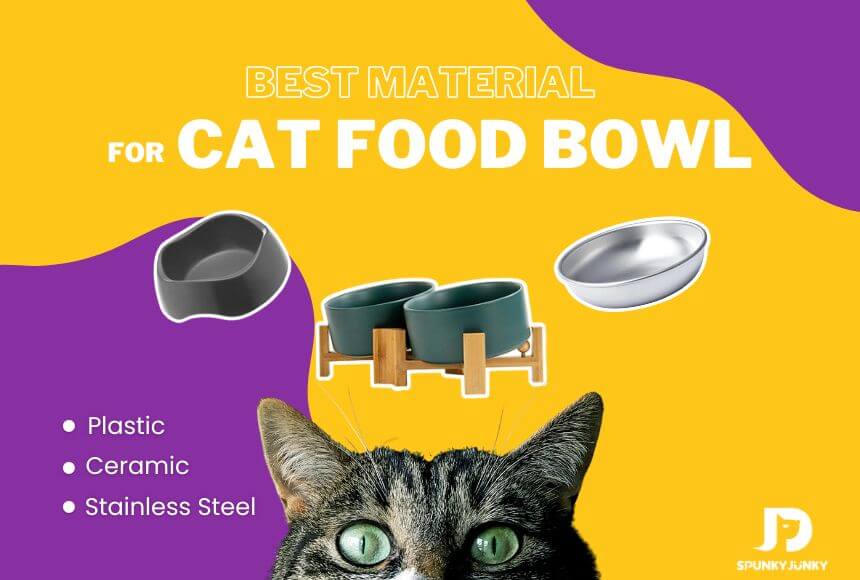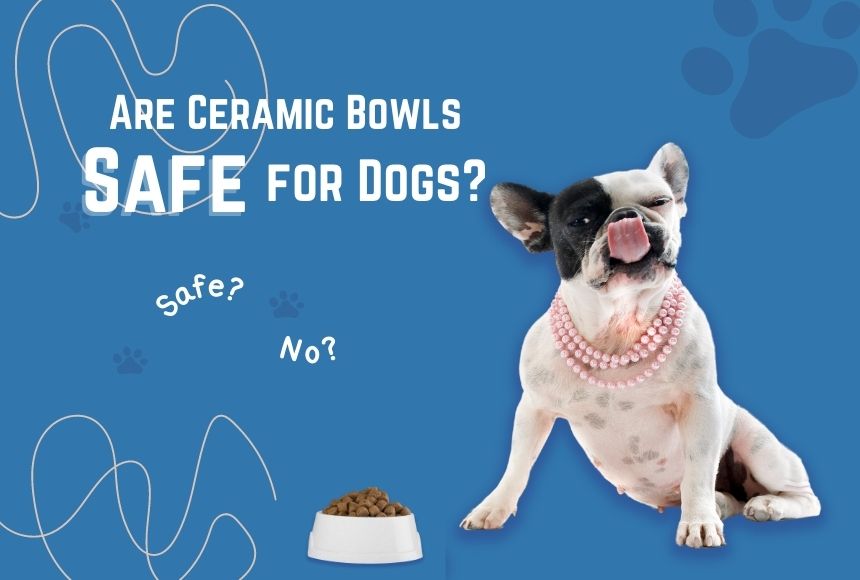Ceramic is one of the most popular materials used to make cat bowls. It can last longer, is easy to clean, and comes in different styles to fit different cats. Ceramic cat bowls are also heavy enough to keep them from falling over or spilling, which can be helpful for cats that eat messily or like to play with their food. But it's best to get a high-quality clay bowl for your cat to make sure it's safe and will last a long time.
But there are many options, and how do you know which ceramic cat bowl is best for your pet?
This article will tell you what to look for in a ceramic cat bowl and how to pick the best cat bowl.

Why Do We Discuss Cat Bowls Separately?
Before discussing choosing a ceramic cat bowl, it's important to know what makes a cat bowl different from a dog bowl.
- ● Structure of cats' and dogs' skulls: Compared to dogs, cats have a more delicate head structure, a smaller, narrower mouth, and a flatter face. This means that cat bowls need to be smaller and shallower than dog bowls to avoid whisker fatigue, a condition in which the cat's sensitive whiskers rub against the sides of the bowl, causing pain.
- ● Whiskers of cats: Whiskers are an important part of a cat's sensory system because they help the cat learn about its world and notice changes in it. When it's time to eat, a cat's whiskers need to be clear to feel the food and find their way around the bowl. Most dog bowls are bigger and deeper than cat bowls, which can hurt a cat's whiskers and make it hard to eat.
- ● Sensitivity: Most cats are more sensitive to sounds and shadows than dogs because their senses are sharper. When a cat eats from a bowl that makes noise, like one made of metal, it can make the cat feel uncomfortable and anxious. If they look in the bowl and see themselves, they might even jump up in fear. To stop this from happening, cat bowls should be made so that they are quiet and don't reflect light. This will let the cat eat in peace and comfort.
Factors to Consider When Choosing a Ceramic Cat Bowl
When choosing a ceramic cat bowl, there are a few things to think about:
- ● Size: The bowl's size is important to ensure your cat eats and drinks enough. As a general rule, the bowl you choose should be at least 1.5 times the size of your cat's head.
- ● Material: As we've already talked about, there are many different kinds of pottery, each with its own qualities. Stoneware is a popular choice because it lasts a long time and is heavy, which makes it hard for cats to knock over. Porcelain is beautiful and easy to carry, but may not last as long as stoneware. Terracotta is porous and can soak up water, which might not be good for cats with stomach problems. Ceramic blend bowls are made from a mix of materials and offer the benefits of ceramic and other materials.
- ● Shape: The bowl's form can also change how your cat eats. Some cats like shallow bowls because they are easy to get to, while others like deep bowls because they can hide their food.

How to Measure Your Cat for the Right Ceramic Cat Bowl Size
Follow these steps to find the right-sized bowl for your cat:
- 1. How big is your cat's head? Use a soft tape measure to measure around the biggest part of your cat's head.
- 2. Figure out the size of the bowl: The smallest bowl your cat needs is 1.5 times the diameter of its head.
- 3. Pick the right one: Choose a bowl that is at least as big as what you figured out in step 2. If you need more clarification, it's always better to choose a bowl slightly bigger than one slightly smaller.
Types of Ceramic Cat Bowls
As was already said, there are many different kinds of ceramic cat bowls:
- ● Stoneware: Cat bowls made of stoneware are strong and heavy, so cats can't easily knock them over. They also come in many different patterns and styles.
- ● Porcelain: Porcelain cat bowls are light and pretty, but they might not last as long as clay bowls. They are often less sturdy and more likely to chip or break than pottery.
- ● Terracotta: Cat bowls made of terracotta are porous and can soak up water, which may not be good for cats with sensitive stomachs. But they are often less expensive and can be made in different styles.
- ● Ceramic-composite: Ceramic composite cat bowls are made with a mix of materials, like rubber and ceramic, to get the best of both. They are usually long-lasting, don't slip, and are easy to clean.
Cleaning and Maintenance
Ceramic cat bowls are usually easy to clean and maintain, but there are a few simple rules you should follow to keep your cat safe and the bowl in good shape:
- ● Clean the bowl often: To prevent germs, you should clean your cat's bowl often. Use hot washing water and a lot of water to clean the bowl.
- ● Don't use rough things: Steel wool and other abrasive materials can scratch the bowl's surface, making it harder to clean in the future.
- ● Look for cracks or chips: Check the bowl often for chips or cracks that could let germs in or make it unsafe for your cat to use. If you see any damage, you should replace the bowl right away.
- ● Think about buying more than one bowl: If you have more than one bowl, it will be easy to clean and switch out your cat's bowls, keeping bacteria from building up.
Conclusion
Any cat owner needs to make a decision about the right ceramic cat bowl. You can choose a bowl that fits your cat's wants and tastes by considering size, material, shape, and design. Remember to measure your cat's head and choose a bowl that is at least 1.5 times the size of its head. It would help if you also chose a bowl made of a material that is safe for your pet and will last a long time. By following these rules and cleaning and maintaining the bowl regularly, you can make sure your cat stays healthy and happy for many years.






